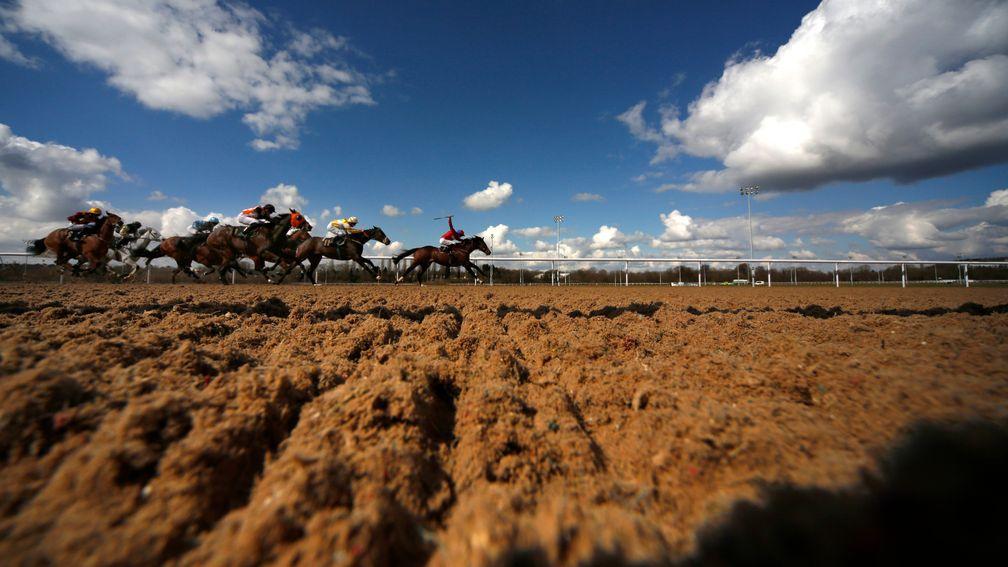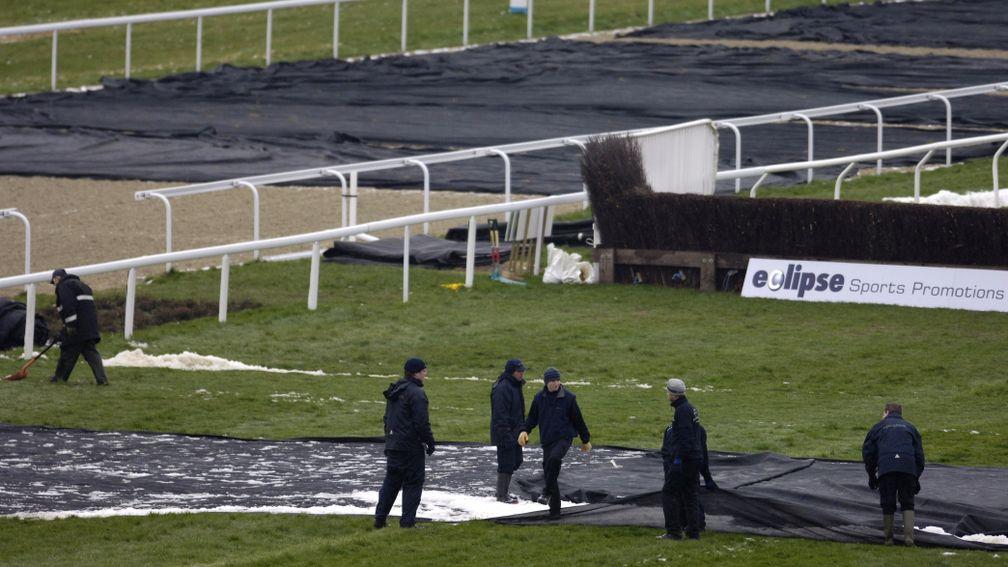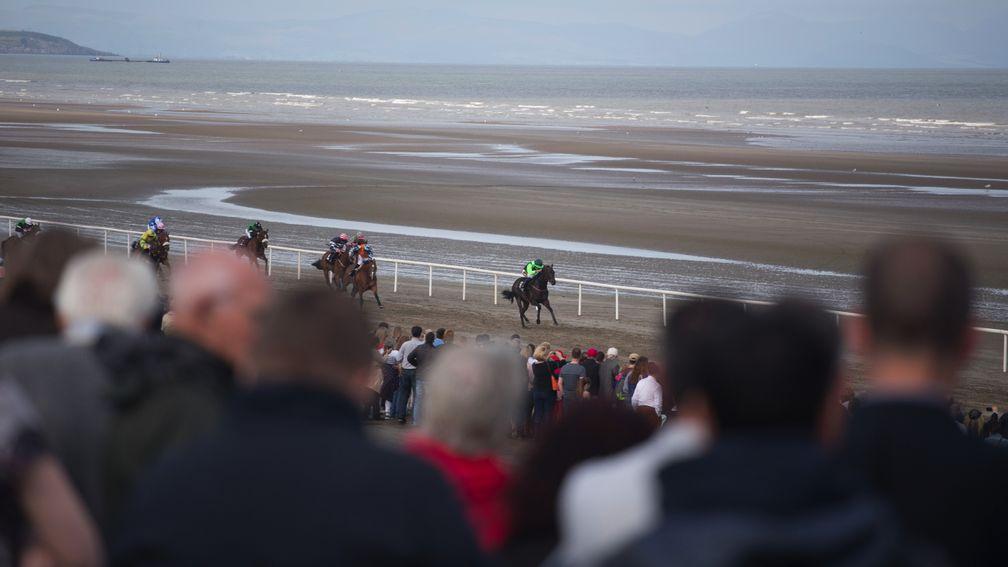The ground explained: glossary of the going part one

Artificial surfaces There are six racecourses in Britain that stage Flat racing on an artificial surface and one in Ireland. The proprietary materials used for all-weather racing include Polytrack, Tapeta and Fibresand, all varying shades of brown, all needing regular maintenance to ensure a correct racing surface and complete renewal at the end of their lifespan. An artificial surface enables a racecourse to stage racing more often and be certain about the exact conditions underfoot, and in the worst of the winter weather these six courses play a vital role in ensuring that racing’s show goes on.
Bath The only Flat racecourse in Britain that does not have a watering system, which can lead to very fast ground during the height of the summer.
Clerk of the course The person at a racecourse responsible for the condition of the racing surface. He or she works with a team of groundstaff to produce suitable going through a combination of turf husbandry, judicious watering, and prayer. The clerk will convey the state of the ground to the media and to trainers with horses entered to run at various stages before raceday but, being at the mercy of the inconsistencies of the weather forecast, can rarely be certain of the outcome before the morning in question. The clerk’s equipment involves a pair of boots, a dog (optional), a pointy stick, an optimistic nature and a very thick skin.
Drainage This has improved greatly in recent years, but its increased effectiveness has created other concerns. Drainage at Cheltenham, for example, has been beefed up to the extent that a single drop of water landing on the terrain is immediately drawn deep into the bowels of the earth China Syndrome-style, leaving no moisture on the surface. This annually results in the need to water ahead of the festival. Rumours that drainage systems of every racecourse in the country is connected to a system of pipes that eventually emerges at Ffos Las has yet to be fully investigated.
Either side Given that racecourses are essentially just big fields, there can be a wide discrepancy between conditions on one side of the big field and the other, which becomes most evident when races are staged on a straight course. A going bias is frequently noted, whereby horses drawn on one side of the track are found to be racing on faster ground than those on the other, giving punters a welcome edge and jockeys and trainers a welcome excuse.
Frost covers A vital component of the clerk’s armoury, frost covers can be laid on the take-off and landing sides of fences and hurdles or, depending on the weather forecast and relative wealth of the racecourse involved, can be deployed over much wider areas. They can be very effective in preventing frost permeating into crucial areas, although their implementation is not a guarantee of racing going ahead.

GoingStick The modern replacement for the pointy walking stick and experienced estimate. It has been termed ‘the random number generator’ by some, but it does give a standardised numerical reading (from 1, swamplike conditions, to 15, the road) that can be easily comparable from week to week, although it does not translate all that efficiently from course to course, ie 6.7 at Carlisle (say) might be quite different ground from 6.7 at Fontwell. Clerks take three readings at approximately 50 points around the racecourse by the simple expedient of shoving the point of the GoingStick into the turf, and can therefore build up a ‘map’ of the going conditions and immediately see where they are improving/deteriorating. Then jockeys and trainers come along on race day and use the more empirical method of digging in a heel here and there on the racing line.
Hard A going description that, owing to modern technology and altered attitudes, belongs to the days of mandatory trilby-wearing and woollen colours. When summer jumping consisted only of August meetings at Newton Abbot and Devon & Exeter, and when summers were proper summers, the going was frequently described as ‘hard’, although it didn’t stop stalwarts such as Carrigeen Hill, Yangtse-Kiang, Grey Dolphin and Mighty Marine
Inspection As good an indicator of the onset of winter as the calendar, inspections are the bane of everyone’s life. Depending on the weather, these can occur at any point in the four or five days before a meeting, announced concomitant with a parlous weather forecast and often suffused with a degree of hopelessly misplaced hopefulness, i.e. course frozen under eight inches of snow, forecast -4C overnight, we’ll have a look at 6.30am to see if there’s any improvement. Inspections can take place at any time up to and after the advertised start of racing, with the lateness of the final inspection in direct correlation to the number of angry letters published in the Racing Post on the subject.
Jumping ground Conditions that are habitually prefixed with the word ‘good’ and uttered with a degree of relish in anticipation of the afternoon’s top-quality steeplechasing fare. There is no specific measurement of ‘good jumping ground’ – for some it describes ground with plenty of give, for others almost bottomless conditions, depending on the requirements of the horse they have in mind. It does not equate with ‘good ground’ – that is never good jumping ground.
Kickback The inevitable consequence of galloping at speed across a forgiving surface. It’s most evident on the artificial surfaces, where horses and jockeys racing off the pace return looking sandblasted and/or like bank robbers with their goggles and facemasks, but the phenomenon exists on turf too, with the added menace of a clod of earth being kicked back by the leaders and travelling at 35mph into the face of a rider in behind.

Laytown The only ‘racecourse’ in Britain and Ireland where the going is the same year after year, and the duties of the clerk of the course involve moving along small children clutching buckets and spades, sweeping the strand clear of defunct marine life, and making sure all the furlong poles have been removed before the tide comes in again.
Moving the rails Not to be confused with ‘moving the goalposts’. Given the wide expanses at most racecourses, judicious tinkering with the position of the running rail can provide several strips of fresh ground, primarily to benefit runners at the major meetings who can therefore race on ground that hasn’t been used for several months.
Members can read the latest exclusive interviews, news analysis and comment available from 6pm daily on racingpost.com
Published on 25 August 2017inRP Classics
Last updated 18:02, 21 September 2017